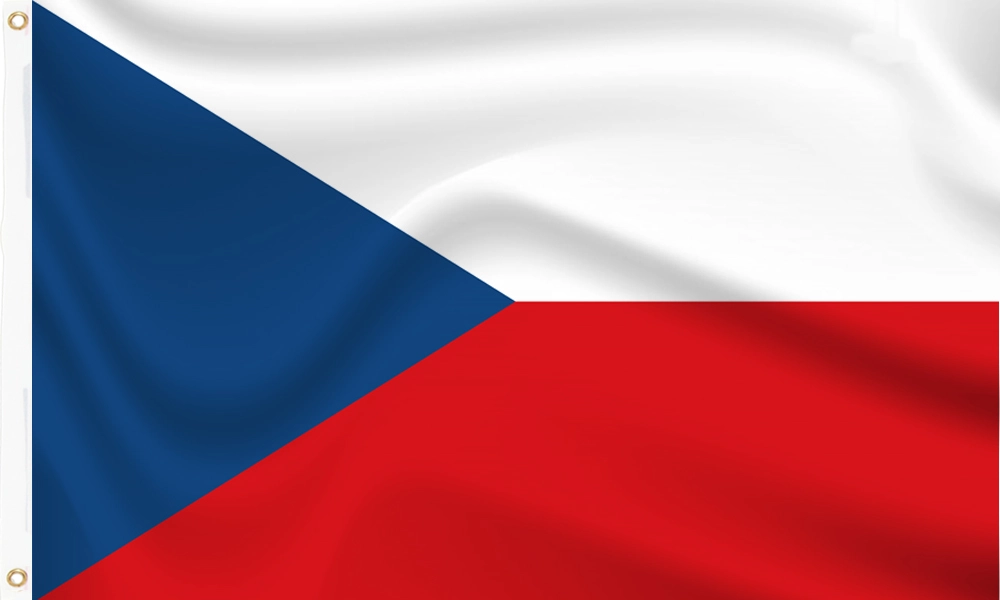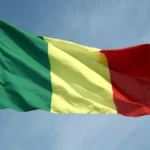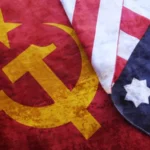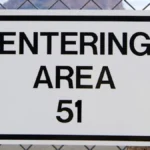
Introducing the Czech Republic: a land of captivating castles, rich cultural heritage, and natural wonders waiting to be explored. From its picturesque landscapes to its vibrant cities, this European gem offers a tapestry of experiences for travelers seeking history, adventure, and relaxation. Join us as we embark on a journey through 25 fascinating facts that showcase the beauty, diversity, and charm of the Czech Republic.
Castle Crazy: The Czech Republic’s castle density is indeed remarkable, with over 600 castles scattered throughout its picturesque landscape. These castles vary widely in style and size, ranging from majestic hilltop fortresses to romantic Renaissance chateaux. Many of them boast rich histories, with some dating back to the medieval era. Among the most famous are Prague Castle, Karlštejn Castle, and Český Krumlov Castle, each offering visitors a glimpse into the country’s storied past and architectural splendor.
Hoppy Heaven: Czechs’ love affair with beer is legendary, with the country holding the world record for the highest beer consumption per capita. Beer is deeply ingrained in Czech culture, with a brewing tradition that dates back over a thousand years. The Czech Republic is home to a plethora of breweries, both large and small, producing a wide range of beer styles, from pilsners to dark lagers. Visitors to the country can experience the vibrant beer culture firsthand by sampling local brews in traditional pubs and beer gardens.
Musical Marvels: Antonín Dvořák, one of the Czech Republic’s most celebrated composers, left an indelible mark on the world of classical music. Renowned for his melodic gifts and nationalistic themes, Dvořák’s compositions often drew inspiration from Czech folk music and landscapes. His Symphony No. 9, popularly known as “From the New World,” is a masterpiece that seamlessly blends American and European musical influences. Dvořák’s legacy continues to resonate worldwide, with his music being performed and revered by orchestras and audiences alike.
Bone Bonanza: Brno, located in the Moravian region of the Czech Republic, is a treasure trove of prehistoric wonders, earning it the nickname “Austerlitz of Prehistory.” The town’s surrounding areas are rich in fossilized remains, including those of dinosaurs and mammoths, providing invaluable insights into the region’s ancient past. Paleontologists and enthusiasts flock to Brno to explore its museums and excavation sites, where they can marvel at the fossils and learn about the creatures that once roamed the land millions of years ago.
Small Wonder: Despite its modest size, the Czech Republic packs a punch in terms of natural beauty and cultural heritage. With a land area slightly smaller than the state of Maine, the country is remarkably diverse, boasting rolling hills, lush forests, and historic towns and cities. Its compact size makes it easy for travelers to explore its myriad attractions, from medieval castles and charming villages to vibrant urban centers and scenic countryside.
Cave Captivation: The Macocha Abyss, located in the Moravian Karst region, is a geological marvel that draws visitors from far and wide. This natural limestone sinkhole plunges to a depth of 138.7 meters, making it the deepest chasm in Central Europe. The abyss is surrounded by breathtaking karst formations and underground caves, including the renowned Punkva Caves, which are open to the public for guided tours. Exploring the Macocha Abyss and its surroundings offers a glimpse into the fascinating world beneath the Earth’s surface.
Astronomical Achievement: Gustav Mahler, a prominent Czech astronomer, made a significant contribution to the field of astronomy with his discovery of the asteroid 658 Asteria. Named after the Greek goddess of falling stars, Asteria orbits the sun within the asteroid belt between Mars and Jupiter. Mahler’s discovery helped advance our understanding of the solar system and paved the way for further exploration of celestial bodies.
Puppet Power: Puppetry holds a cherished place in Czech culture, with a tradition that dates back centuries. Marionette shows, in particular, have captivated audiences of all ages with their intricate craftsmanship and whimsical performances. The National Theatre in Prague features a dedicated puppet theatre, where visitors can experience this unique art form in all its glory. Puppetry continues to thrive in the Czech Republic, with puppet festivals and workshops held throughout the year to celebrate its rich heritage.
Crystal Clear: Bohemian glass has long been renowned for its exceptional quality and craftsmanship. Produced in the Czech Republic’s Bohemia region for centuries, this exquisite glassware is prized for its clarity, brilliance, and intricate designs. Skilled artisans employ traditional techniques passed down through generations to create a wide range of glass products, including vases, goblets, and chandeliers. Visitors to the Czech Republic can admire and purchase Bohemian glass at local glassworks and souvenir shops, taking home a piece of this timeless craftsmanship.
Alphabet Soup: The Czech language is notable for its rich linguistic heritage and distinctive alphabet, which consists of 41 letters, including four accents not found in the English alphabet. This unique alphabet allows for precise pronunciation and lends the language its musical quality. Learning Czech can be a rewarding experience for language enthusiasts, offering insight into the country’s culture and history. While mastering its complexities may pose a challenge, the beauty of the Czech language lies in its ability to express the nuances of thought and emotion with eloquence and grace.
Literary Legend: Franz Kafka, born in Prague, Czech Republic, is one of the most influential writers of the 20th century. His works, including “The Metamorphosis” and “The Trial,” explore themes of existentialism, alienation, and bureaucracy. Kafka’s writing style, characterized by surrealism and psychological depth, has left a lasting impact on literature and popular culture.
Heavenly Harmony: The Sedlec Ossuary, located near Kutná Hora, is a unique architectural marvel adorned with the bones of over 40,000 individuals. This macabre yet strangely beautiful chapel features elaborate bone arrangements, including chandeliers, coats of arms, and even a bone-covered altar. The ossuary serves as a powerful memento mori, reminding visitors of the transience of life and the inevitability of death.
Watchful Wonder: The Prague Astronomical Clock, installed in 1410, is a masterpiece of medieval engineering and artistic craftsmanship. Located on the Old Town Hall Tower, this astronomical clock displays the time, phases of the moon, and positions of the sun and stars. Every hour, crowds gather to witness the clock’s intricate mechanical show, as figurines representing the Twelve Apostles parade past the windows.
Architectural Icon: The Charles Bridge, spanning the Vltava River in Prague, is an iconic symbol of the city’s rich history and architectural heritage. Built in the 14th century, this Gothic bridge is adorned with 30 baroque statues depicting saints and religious figures. Visitors can stroll along the bridge, taking in panoramic views of Prague Castle, the Old Town, and the river below.
UNESCO Treasures: The Czech Republic boasts 16 UNESCO World Heritage Sites, each showcasing the country’s diverse cultural and natural heritage. These sites range from historic cities and castles to natural landscapes and industrial landmarks. Highlights include the historic center of Prague, the cultural landscape of Lednice-Valtice, and the picturesque village of Český Krumlov.
Spielberg’s Stomping Ground: Český Krumlov, a UNESCO World Heritage Site, served as a filming location for Steven Spielberg’s fantasy adventure film “The Mortal Instruments: City of Bones.” This charming medieval town, nestled in the picturesque Bohemian countryside, provided the perfect backdrop for the film’s atmospheric setting and magical elements.
Sweet Tooth Satisfied: The Czech Republic is renowned for its spa towns, where visitors can indulge in relaxation and wellness treatments while enjoying the therapeutic benefits of natural hot springs. Karlovy Vary, the most famous of these spa towns, is known for its 13 healing mineral springs and delicious wafer cookies, a popular local delicacy.
Nature’s Playground: Šumava National Park, established in 1991, is a haven for nature lovers, encompassing vast forests, meadows, and mountainous terrain. Visitors can explore a network of hiking trails, marvel at glacial lakes, and observe diverse wildlife, including lynx, deer, and golden eagles. Šumava’s pristine landscapes offer opportunities for outdoor recreation and eco-tourism year-round.
Hydropower Powerhouse: The Štěchovice Dam, located on the Vltava River, is the largest hydroelectric power station in the Czech Republic, generating clean energy for thousands of households. This engineering marvel harnesses the power of flowing water to produce electricity, reducing the country’s reliance on fossil fuels and mitigating environmental impact.
Monetary Matters: The currency of the Czech Republic is the Czech koruna (CZK), symbolized by the abbreviation “Kč.” One Czech koruna is divided into 100 heller. The koruna’s exchange rate fluctuates against other currencies, with its value influenced by economic factors such as inflation, interest rates, and foreign exchange reserves.
Mountain Majesty: Sněžka, situated on the Czech-Polish border, stands as the highest peak in the Czech Republic, reaching an elevation of 1,602 meters (5,256 feet) above sea level. This majestic mountain, part of the Krkonoše mountain range, offers stunning panoramic views of the surrounding landscape and is a popular destination for hikers and nature enthusiasts.
Underground Adventures: The Punkva Caves, nestled within the Moravian Karst, are a fascinating subterranean wonderland characterized by intricate limestone formations and underground waterways. Visitors can embark on guided tours of the caves, marveling at stalactites, stalagmites, and other geological features sculpted over millions of years. The Punkva Caves provide a captivating glimpse into the mysterious world beneath the Earth’s surface.
Engineering Feat: The Negrelli Viaduct, spanning the Vltava River in Prague, stands as the longest railway bridge in the Czech Republic, stretching 1,117 meters (3,668 feet) in length. This impressive structure, constructed in the mid-19th century, played a pivotal role in connecting Prague’s railway network and facilitating transportation across the river. The Negrelli Viaduct remains an enduring symbol of Czech engineering prowess and historical significance.
Glass Ceiling Shattered: Czechoslovakia, the precursor to the Czech Republic, made history by electing Vlasta Parkanová as the world’s first female head of state in 1968. Parkanová served as the Acting President of Czechoslovakia for a brief period, breaking barriers and paving the way for future generations of women in politics. Her election marked a significant milestone in the ongoing struggle for gender equality and representation in leadership roles.
Ice Hockey Heroes: The Czech Republic boasts a storied tradition in ice hockey, with a proud legacy of success on the international stage. The country consistently ranks among the top nations in the sport, having clinched gold medals at prestigious competitions such as the World Championships and the Olympic Games. Czech ice hockey players are revered for their skill, tenacity, and passion for the game, embodying the spirit of teamwork and national pride.
Frequently Asked Questions about Czech Republic:
What is the best time to visit the Czech Republic?
The Czech Republic experiences all four seasons, so the best time to visit depends on your preferences.
Spring (March-May): Pleasant weather with blooming flowers, ideal for exploring cities and outdoor activities. Expect moderate crowds and some rain showers.
Summer (June-August): Warmest weather, perfect for outdoor adventures, castle hopping, and enjoying the vibrant atmosphere of Prague. This is peak tourist season, so expect larger crowds and higher prices.
Autumn (September-November): Beautiful fall foliage, comfortable temperatures, and fewer crowds compared to summer. A great time for sightseeing and enjoying outdoor cafes.
Winter (December-February): Magical Christmas markets, winter sports opportunities in the Šumava mountains, and a unique atmosphere in Prague with fewer crowds. Be prepared for cold temperatures and possible snowfall.
Tip: If you’re looking for a good balance between pleasant weather and manageable crowds, consider visiting during the shoulder seasons (spring and autumn).
Is the Czech Republic expensive to visit?
Compared to Western European countries, the Czech Republic is a relatively affordable destination. Here’s a breakdown of costs:
Accommodation: Budget-friendly hostels and guesthouses are readily available, while comfortable hotels offer good value for money.
Food: Traditional Czech meals are hearty and inexpensive. Street food like sausages and pastries are a delicious and affordable option.
Transportation: Public transportation in cities is efficient and affordable. Taxis can be expensive, so consider ride-sharing apps for a more economical option.
Activities: Entrance fees for museums and attractions are generally reasonable compared to other European destinations.
Tip: Take advantage of Prague Card or Brno Card for discounted entry to attractions and free public transportation during your stay.
What language is spoken in the Czech Republic, and do I need to speak Czech to get by?
Czech is the official language of the Czech Republic. While English is becoming increasingly common in tourist areas, especially Prague, knowing some basic Czech phrases will enhance your experience and show respect for the local culture. Here are some helpful phrases:
Hello (Dobrý den) – Dobri den (Dov-ree den)
Thank you (Děkuji) – Děkuji (Dekyoo-yi)
Please (Prosím) – Prosím (Prah-seem)
How much is this? (Kolik to stojí?) – Kolik to stoyí? (Koh-lik toh stoy ee?)
Do you speak English? (Mluvíte anglicky?) – Mluvíte anglicky? (Mloo-vee-te ahn-glicky?)
Tip: Many restaurants and shops have menus and signs in English, but venturing outside major tourist areas may require some basic Czech phrases.
What is the currency in the Czech Republic, and how can I exchange money?
The Czech Republic’s currency is the Czech koruna (CZK). You can exchange your currency for koruna at airports, banks, and exchange offices. ATMs are widely available in major cities and tourist areas.
Tip: Check the exchange rates before you travel and consider using a travel debit card with low foreign transaction fees for ATM withdrawals.
Is the Czech Republic safe to visit?
The Czech Republic is generally considered a very safe country for tourists. However, as with any destination, it’s always wise to be cautious and practice common sense:
Be mindful of your belongings in crowded areas.
Keep an eye on your valuables when using public transportation.
Be aware of pickpockets, especially in tourist hotspots.
Use reputable exchange offices and avoid carrying large amounts of cash.
Tip: Purchase travel insurance to cover any unexpected medical emergencies or trip cancellations.









